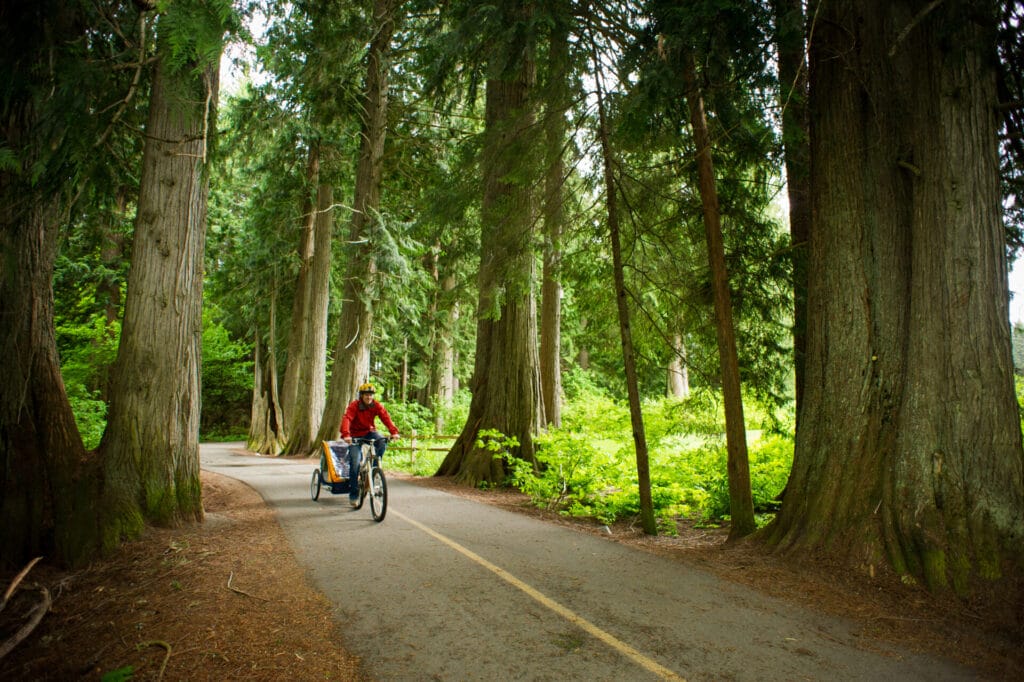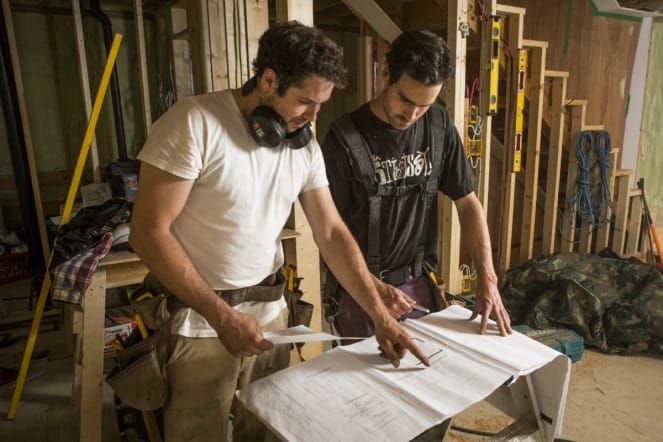Council Roundup from Tuesday, March 11, 2025
Looking to get caught up on the March 11 Regular Council meeting? We’ve pulled together some key items, including:
- RCMP crime reporting
- Climate action progress update
- RMOW Strategic Plan update
For all the details, check out the recording of the full meeting at whistler.ca.
RCMP presents policing stats for 2024

Whistler RCMP Officer-in-Charge Robert Dykstra addresses elected officials at the March 11 council meeting. Photo credit: Brandon Barrett
Whistler RCMP presented their annual policing stats for 2024, which show a marked increase in mental health-related calls and a 22-per-cent increase in property crime, alongside declines in assaults and violent crime.
Overall, the detachment fielded 5,162 calls for service last year, an eight-per-cent decline, and one-hundred and 16 charges were laid in that time, down six per cent from 2023.
One of the most notable increases was the number of mental health-related calls, up 83 per cent. There was also a 36-per-cent increase in mental-health apprehensions, done when responders have reason to believe an individual poses a risk to themselves or others.
The three-person Community Response Enforcement Team, which includes a mental health worker, has special training to respond to mental health-related calls. Whistler RCMP operate through a “hub model,” meaning police and local social service organizations, like Whistler Community Services Society and Vancouver Coastal Health, share information and insights.
“Mental health is definitely a pandemic right now, but [our designated mental health worker] has been instrumental in making sure those people are going to the hospital and getting the help they need,” explained Sgt. Nate Miller.
Property crime rose by 22 per cent last year, with notable increases in fraud, up 53 per cent; auto theft, up 100 per cent; and theft over $5,000, up 333 per cent due to a rise from three instances in 2023 to 13 in 2024. Credit card scams made up a sizable portion of the reported fraud; large thefts are frequently linked to prolific offenders from outside of Whistler.
“We’re literally seeing mostly prolific offenders who are dealing with drug issues. They’re coming up on a crime spree, usually in a stolen vehicle,” he said, noting how offenders will commonly access unlocked vehicles and homes.
Violent crime declined by seven per cent overall. The biggest drop in this category came in assaults, which fell by nine per cent. Instances of sexual assault were on par with 2023, from 31 reports to 30 last year. Domestic violence rose slightly, from 28 reports to 32 in 2024.
“A lot of our calls for service are visitors coming in, which makes it a little more difficult for our intimate partner violence position to be able to connect and manage those individuals and make sure they’re getting the help they need,” Miller said.
Motor vehicle collisions rose 35 per cent, resulting in 18 injuries, up from nine in 2023. None were fatal. Impaired driving dropped 10 per cent, and five local RCMP members were named to Alexa’s Team in 2024, an honour awarded to officers who advance a dozen or more impaired driving cases in a year.
In other calls for service, there was a 55 per cent decrease in drug-related calls, and an 18 per cent increase in disturbance calls. There was also a 13 per cent rise in missing person reports, and a 67 per cent increase in stranded persons, speaking to the importance of RCMP’s collaboration with Whistler Search and Rescue.
Looking ahead, emphasis on community collaboration and partnership policing continues. RCMP plan to purchase a drone to assist in missing person investigations, and body-worn cameras.
The RMOW is preparing to absorb a higher portion of policing costs in the community. After Whistler’s population exceeds 15,000, expected to be confirmed in the 2026 census, the municipality’s share of the roughly $5.4 million in annual policing costs will rise from 70 to 90 per cent.
Whistler’s progress on climate goals — and where we lag behind

An update on the progress made toward Whistler’s climate goals in the second half of 2024 shows Whistler remains short of meeting its 2030 Greenhouse Gas (GHG) reduction target.
Adopted in 2022, the Big Moves Community Action Implementation Plan (CAIP) outlines key initiatives and actions to address climate change mitigation and adaptation planning across the community, with the underlying goal of cutting Whistler’s 2007 GHG levels in half by 2030. The plan identifies six “Big Moves” and three adaptation goals key to achieving Whistler’s environmental targets. |
The update shows continued prioritization of Big Moves and collaboration with key stakeholders, residents and businesses will be essential to achieving the important milestone.
“We know that action today is necessary, and we know that money spent today will have benefits for Whistler down the road,” said Maria Thorlakson, the RMOW’s climate action coordinator. “Our longstanding position as a climate leader is something I think everyone in this room values and wants to maintain. Our current greenhouse gas emissions trajectory puts this status in jeopardy.”
Our resort made the most progress on Big Move 2: Decarbonize Passenger and Commercial Transportation and Big Move 4: Build Zero Emission Buildings.
Big Move 2 actions included:
- Installation of two new municipal electronic vehicle fast chargers
- 22 new Level 2 EV chargers, courtesy of BC Hydro, for installation in Day Lot 3
- Two electric trucks for the RMOW’s fleet
Big Move 4 actions included:
- Continued implementation of BC’s Energy Step Code
- Two Step Code engagement sessions with local builders
- Internal Step Code training for municipal planners and building officials
Positive progress on Big Move 6: Close the Loop and Shift Towards Lower Carbon Consumption was also made, including:
- Finalization of a construction waste educational resource
- Implementation of a solid waste outreach plan
- Several events on Whistler’s circular economy
The most action is needed on Big Move 1: Move Beyond the Car, Big Move 3: Reduce Visitor Travel Emissions, and Big Move 5: Make Existing Buildings Better; although, given the magnitude of the goals, what has been done is impactful.
With passenger vehicle emissions making up most of Whistler’s carbon footprint—53 per cent of emissions—Big Move 1 remains key. Actions included:
- A 7,650-hour expansion of public transit service
- Expansion of the Evolve e-bike share program, nearly 13,000 trips and 5,000 plus unique riders
- Expansion of the free bike valet program with 11,600 bikes parked last summer
On Big Move 3, more work is required to minimize the impact visitors have on Whistler’s infrastructure as the region’s population continues to grow. Collaboration with key stakeholders will be key, though there is action:
- A Smart Tourism workshop
- A parking study with Vail (results pending)
- $50,000 for Pemberton Commuter bus route
On Big Move 5 much effort is focused on making single-family homes more energy efficient, with more work to do on multi-unit residential buildings and hotels. Actions last year included:
- Expansion of the Retrofit Assist program, including three engagement sessions with homeowners and six with contractors
- Two workshops with the hotel sector
- Two RMOW building energy studies
Tuesday’s update also underscored several key measures helping the community adapt to a changing climate:
- Minimizing threats from wildfires
- Increasing the resilience of Whistler’s infrastructure
- Protecting ecosystems and biodiversity
The report highlights recent efforts around wildfire mitigation and emergency planning, water conservation, stormwater improvements, and the early implementation of a new Priority Habitat Framework as key to our adaptation goals.
Asked how mayor and council could best support RMOW staff in moving the needle on climate action, Thorlakson asked Council to use their platform to advocate.
“Council advocacy sounds like this big, lofty thing, but honestly I think it does hold a lot of weight in our community,” she said.
Insights from council retreat update corporate strategic plan

Photo credit: Justa Jeskova
In late January, Council and RMOW staff met for the mid-term Council retreat to reflect on the accomplishments of the past two years and outline priorities moving forward.
Chief Administrative Officer Ginny Cullen highlighted insights from the Jan. 24 one-day meeting and gave an update on Council’s four strategic priorities: housing, climate action, community engagement and smart tourism.
Steady progress has been made within the priority areas, although external factors outside of the RMOW’s control, like provincial housing Bill 44, have shifted the order in which work gets done. Discussion centered around the best way to set future councils up for success with strategic investment of time and resources as external pressures increase.
“When we stretch our thinking out 20 to 25 years, we see a greater number of needs in the community as this becomes a more diverse town with a range of ages and demographics, and more likely a higher population,” Cullen said. “Climate impacts will be more visible. Large choices will be needed regarding what gets funded by the RMOW and what is left to others to fund and make happen in the community… The importance of ensuring care and maintenance is ongoing and priorities and reserves are kept healthy will be an area of key focus.”
It was suggested today’s staff and Council should be looking ahead at future employee housing projects.
“It seems to me we will be well served by getting to work on developing future shovel-ready sites as we on work on constructing the final buildings in Cheakamus Crossing Phase 2,” said Mayor Jack Crompton.
A Council amendment was made to ensure work begins on a comprehensive development zone for future housing, so it is ready by June 2026, when Cheakamus finishes.
Other potential priorities for Whistler’s next council, which will begin its term late next year, will be neighbourhood-level planning, strengthening the existing long-term asset management plan, building out municipal reserves through additional sources of revenue, and updating Whistler’s Official Community Plan in 2028.
Insights from the retreat will be used to update council’s strategic plan, which will be considered by officials at a council meeting in May You can watch the presentation on whistler.ca.
